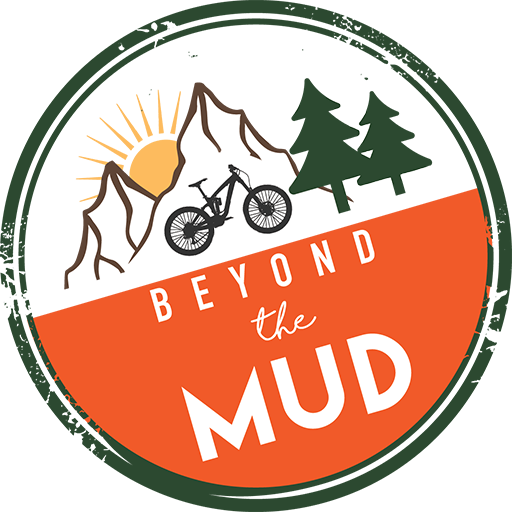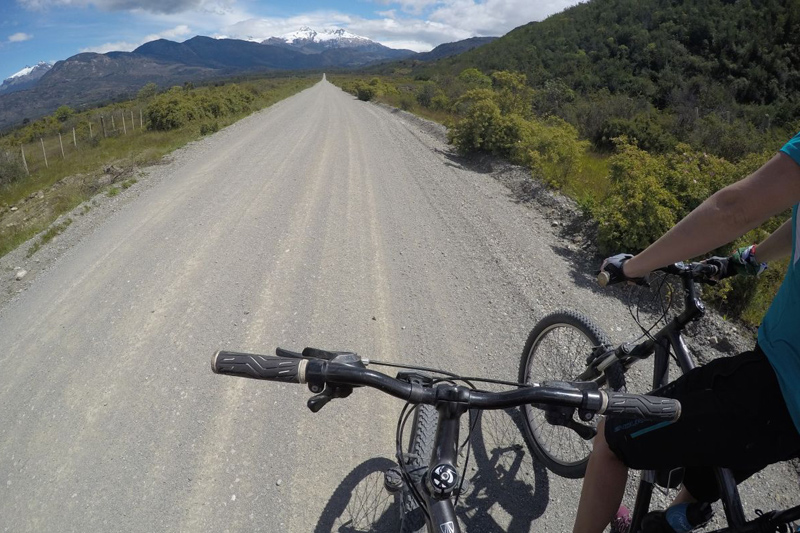
by hattenburrow | Jul 17, 2018 | Biking Adventures, Training
Since the Trans Alp in 2016 I have been really keen on riding another stage race. The Trans Alp was so tough both mentally and physically but the highs well outweighed the lows and I have been keen to find another adventure and test my body and mind against the odds.
The Carpathian MTB Epic seemed like the perfect adventure. 180KM, 8,100m of lung busting climbing in 4 days, through the land of Dracula in one of Europe’s last genuinely wild mountain regions.

How could I say no!
This year along with taking on this 4-day stage race my life is a little different to when I did the Trans Alp. Back in 2016 I had no dog to look after and I managed to reduce my coaching right down to just the kids club in order to fit in 12 / 14 hour training weeks. This year that wouldn’t be possible! Luna (my German Shepherd) needs her regular walks and runs and my coaching has been booming. I have this year introduced mountain bike retreats for adults as well as taking Pilates classes, so as you can see life is a whole lot busier than 2016 so 12 hour training weeks are a juggling act!
In short I have had to condense my training into one long ride and a sprints or hill session a week. I have also been running and doing kettlebells each week which has helped to increase my muscle strength. Pilates as always is something I do each week and is a great way to strengthen my core and upper body as well as help prevent injuries.
My tips for staying focused on long rides are:
- Set out with a planned route or goal in mind
- Have enough water and snacks for the whole session (If you cannot carry enough water which is likely then know when you can get some on route from a friendly pub or shop)
- Practice eating different snacks on shorter rides and use your favourites for those long sessions, have something salty
- Only focus on the hour ahead, this is especially important if the weather is bad or you’re feeling tired only think as far as the next hour that way you can chunk your ride down
- Use lampposts/trees as little sprint breaks if you’re feeling full of beans or just pick the pace up a little for 2 mins and then drop back down again

The Carpathian MTB Epic is a full-service event running from 16th – 19th August and is the perfect opportunity for an adventure, even for the time crunched like me. If you hurry up and register until July 29 you may catch a good deal as well. Last day for registrations is August 5, 2018.

by hattenburrow | Dec 21, 2017 | Nutrition, Training
Dinner – Pumpkin soup
Serves: 2
- 2 Butternut/ pumpkin
- 8 Carrots
- 1 1/2 can coconut milk
- 2 cloves garlic
- Salt & pepper to taste
- Small drizzle of pumpkin oil
- 1 tsp ginger
Garlic
- Antibacterial/ antifungal properties due to its specific chemical compound called allicin. It is highly effective at killing microorganisms responsible for some of the most common infections (including the common cold)
- Preventing and helping to treat heart disease. This is due to its ability to help reverse plaque build up in the arteries and help balance blood sugar levels.
Ginger
- Anti-inflammatory properties effective in helping alleviate muscle and joint pain and improving mobility and stiffness. This is due to its active compound, gingerol, which may help relax blood vessels.
- Effective immune booster, as research shows it to be antibacterial able to help fight infection
- Digestive aid and helps soothe an upset stomach. It is also good for resolving nausea during pregnancy or motion sickness.
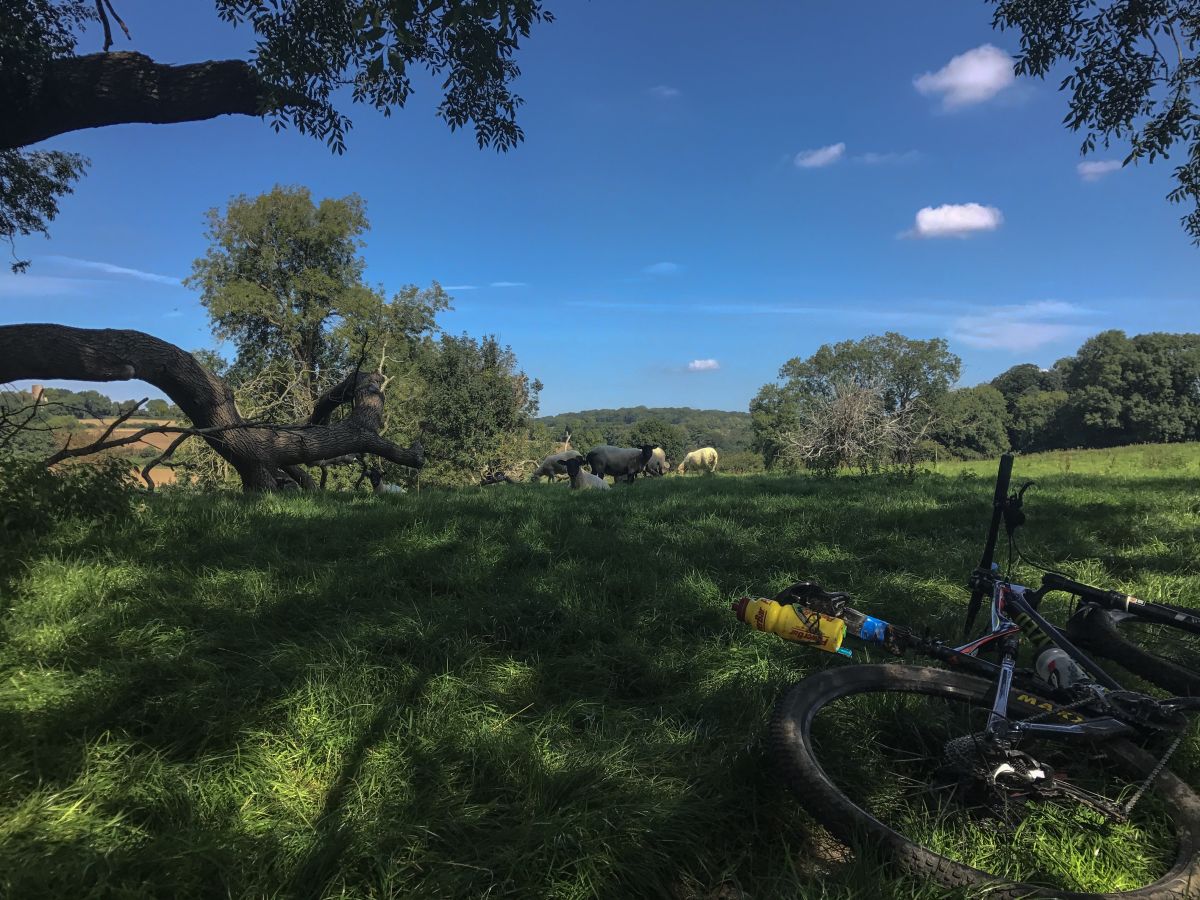
by hattenburrow | Aug 31, 2017 | Coaching, Training
Hi guys and girls this week I thought I’d share with you my Monday training session plan maybe have a go at it yourself.

You will need:
- A bike
- not to have eaten for an hour or two previously
- a bottle of water and a snack for when you finish (banana or dates would be my choice)
Find a flattish road where there are no parked cars, tight bends or traffic lights to deal with you need to be able to give it your all safely.
Start by warming up for a good 20 minutes working in and out of the saddle to really warm those legs up.
Interval training is all about balancing high-intensity bursts of speed with recovery time. Not only will they help you improve aerobic capacity and speed, the post workout calorie burn is great. Remember to have something nutritious and protein packed for when you get home.
Start with 30 second (building up to 1 min over a period of 6 weeks) all-out effort. Then have 1 minute rest – repeat this 4 to 8 times. (building up over 6 weeks so not to overload too soon.)
After your reps have a 4 minute recovery spin keep your legs moving at a steady pace to help flush out the lactic acid.
Repeat this set 4 times.

After your final sprint change to a sub maximal effort for 5 to 10 minutes then have 10 minutes recovery.
Repeat this set one more time.
Recovery ride home, make sure you have a good meal / protein shake full of vitamins and protein to help your body recover. Also this session will make you hungry have some nuts (walnuts are great), blueberries and other healthy snacks on hand to stop you reaching for anything naughty.
I hope you enjoy this training session let me know how you get on.

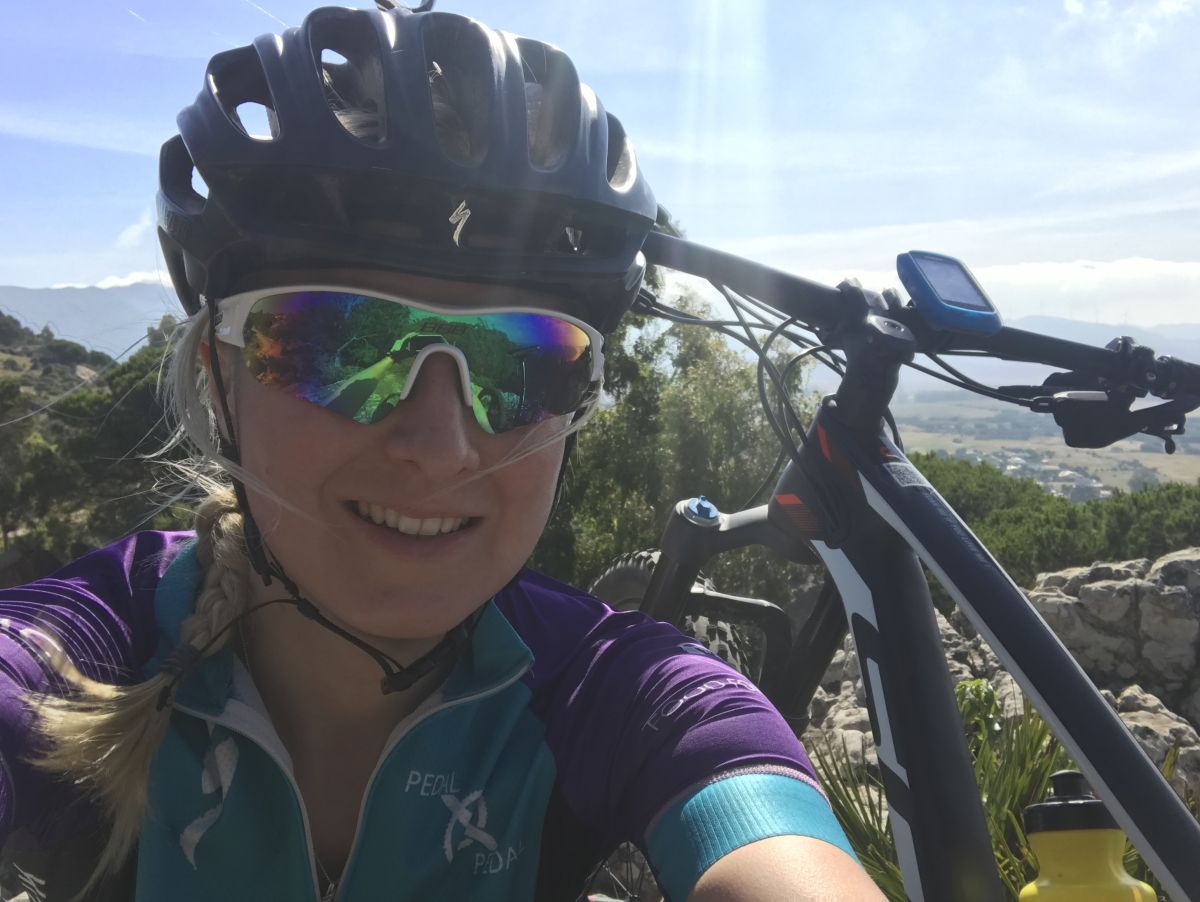
by hattenburrow | Jul 27, 2017 | Biking Adventures, Nutrition, Training
On Saturday I will be racing 24 hours solo in the Pivot 24:12 at Newnham Park in Plymouth.
I am not sure physically or mentally if my body is ready for what I am about to put it through but then again I am not sure you can ever be 100% ready for anything which is demanding mentally and physically all you can be is prepared for all eventualities.
I haven’t really had a chance to think about the race properly until this week when I went to start packing and suddenly felt a wave of excitement/panic about what I have to do.
It will be one of the biggest races I have ever taken part in and as it stands my goal is to just complete it.
I know my body isn’t great with no sleep so my plan is to try and ride as much as I can during the day and then at night every 3 hours take a little break and if I get super tired maybe an hour power nap which hopefully will re-charged the batteries enough to get back on again!
My friend asked, so what do you pack when you’re going to be in the saddle for 24 hours the answer is a lot!

Clothing wise I have a shorts and jersey change for every 6 hours on top of this I have a selection of Grip Grab arm and leg warmers some light weight and some rain proof!
One thing I know from experience is cold feet mean a cold body so I have 7 pairs of socks for over the 24 hours. I will also be taking two pairs of shoes and over shoes just in case!
For my top half I have a hat to go under my helmet and a base layer along with two warm jackets and a waterproof.
Being able to change into dry and comfortable clothes will make the whole situation more bearable. I hope!
Overnight I will be using Hope lights to light up the trail these are good lights and I will be using a head torch as well as a handle bar mount for optimal lighting.
Nutrition:

During the race I will try and eat as much natural food as possible I will supplement this with gels when I need too. My plan is to eat around 60g or carbohydrate an hour which is the equivalent to 1 banana, 1 energy gel and 2 large dates. This is a lot of food but if I eat enough I should be able to maintain my energy levels for the duration.
From experience I will crave savoury foods so hot snacks when I stop will include pot noodles, porridge pots and cheese sandwiches and maybe some ham and olives!
I will be drinking mainly water but have some Vitamin C tablets and Dirolyte as well to keep on top of my electrolyte replacement.
Every new challenge brings a new experience and opportunity to learn something about myself, my ability as a cyclist and to push my body out of its comfort zone.
See you on the other side. x
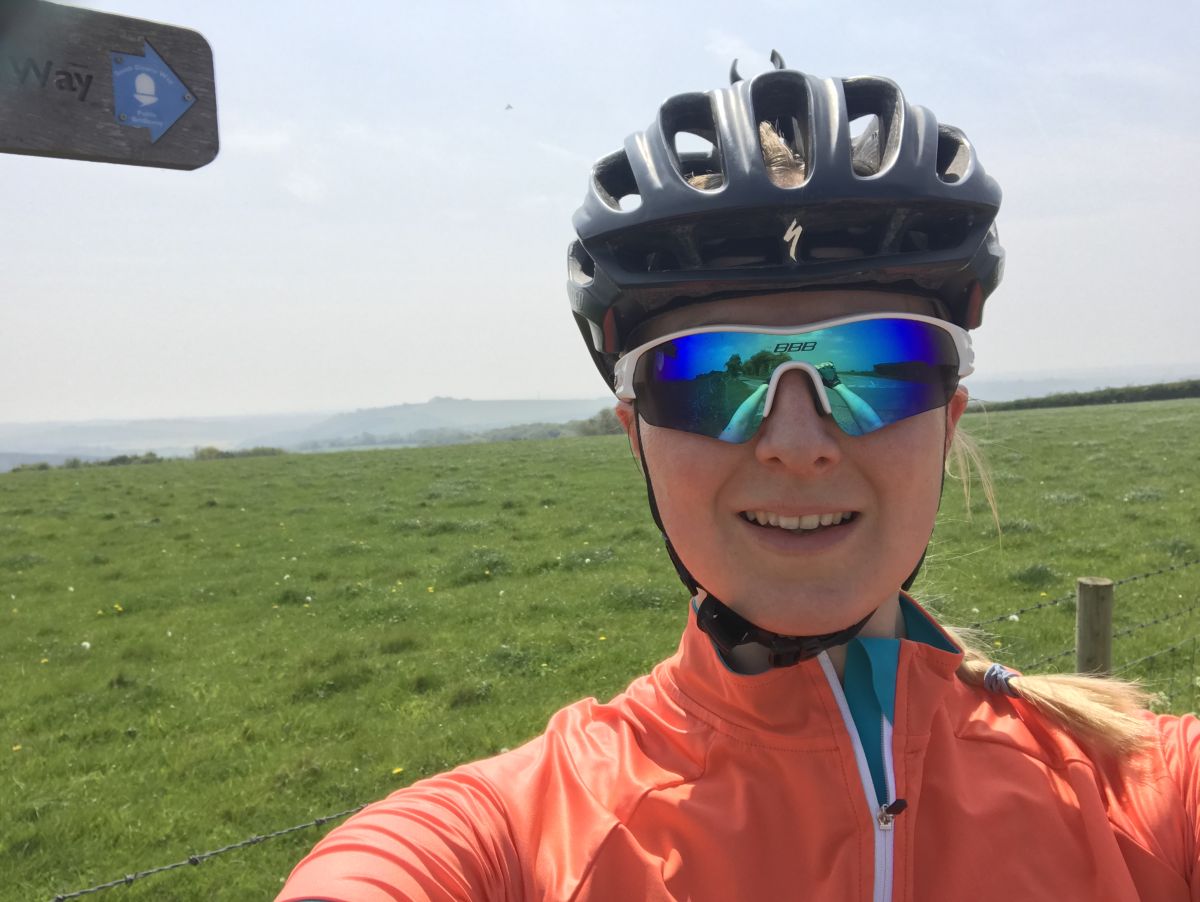
by hattenburrow | May 7, 2017 | Training
This week I started my new Training Peaks training plan. I have edited it slightly so that it fits more inline with training for 24/12 hour endurance racing.
My main training sessions are around 3 to 4 hour session where I have two or three goals for the session.

On Monday my first 3 hour session was a sub-threshold (heart rate between 139 – 147) with tempo (HR between 131 – 138) phases and hard efforts on the hills. I kept my cadence high for this session and pushed hard, harder than I needed to but I felt good and I knew that my body was capable of working a little harder so I decided to go for it! When I got home I had done 64KM in 3 hours which was an okay distance for that time. I had spent 53 mins in my sub-threshold zone and 24 mins in my tempo zone with another big block in my anaerobic capacity zone (HR between 156 – 255) I was pretty tired for the rest of the day but felt happy with my first training session on my new plan.

The rest of the week comprised of a few sessions including going back to Pilates. It was great to be back in a Pilates class and Stacey is a great teacher I left Pilates nearly as tired as I was Monday from thinking about breathing, alignment and working muscles that had been asleep for a while!
Saturday was another big endurance day this time 3 hours with the same goals sub-threshold, give it some on the hills and high cadence. I chose a new route and it turned out to be rather hilly! 1000m of climbing in fact which made for some slow cadence sections and a lot of hard efforts on the hills, these hard efforts were added to, by the fact my bike wouldn’t change down into the small ring, no amount of limit screw fettling seemed to get it changing properly so I gave up and decided I would just use it as an extra training element!

At about 2 hours 40 I was still heading North away from home and made the decision to add on another hour to my ride. It was a beautiful day and I felt strong, the only thing I was running out of was water so a quick stop at a pub to get my bottle refilled kept me on the road for an extra circuit.

I arrived home after 4 hours covering 77.5KM with an average heart rate of 142 and a max of 181 I was really happy with my extra hour and the fact I climbed 1000m. I have only really just started training properly again since the end of February and I know from experience how quickly form drops so to pull off two good long rides in one week has left my feeling super happy.
I recommend Training Peaks to anyone looking to evaluate training it is simple to use and has some great features to help you stay on target and not over train.
Here is a brief outline on what the acronyms and numbers mean:
CTL (Chronic Training Load) is also called Fitness; it is a rolling 42-day average of your daily TSS (Training Stress Score). It indicates how much training load you are currently managing. If your Fitness(CTL) rises you are capable of handling a higher training load and therefore are more fit. If it decreases you are becoming unfit.
Watching this will indicate whether your training is working and you are improving or whether you need to put more in or have a rest day.
TSB (Training Stress Balance) is a way of measuring ‘form’ form is the magic term used for an athlete who is race ready.
Form in Training Peaks is measured by subtracting today’s Fatigue (Acute Training Load, or ATL) from today’s Fitness (Chronic Training Load, or CTL). Both Fatigue and Fitness are expressed as Training Stress Score, or TSS per day (TSS/d). Once the software has done the math, the remainder is your Form (by the way, the resulting Form value is for tomorrow—not for today.) It can be either a negative or a positive number depending on which is greater- Fitness or Fatigue. If Form is negative you are likely to be tired and probably not race ready. If Form is positive then you are probably rested and perhaps on form and ready to race.
If you would like to know more about using Training Peaks they have a brilliant blog or feel free to drop me an email.
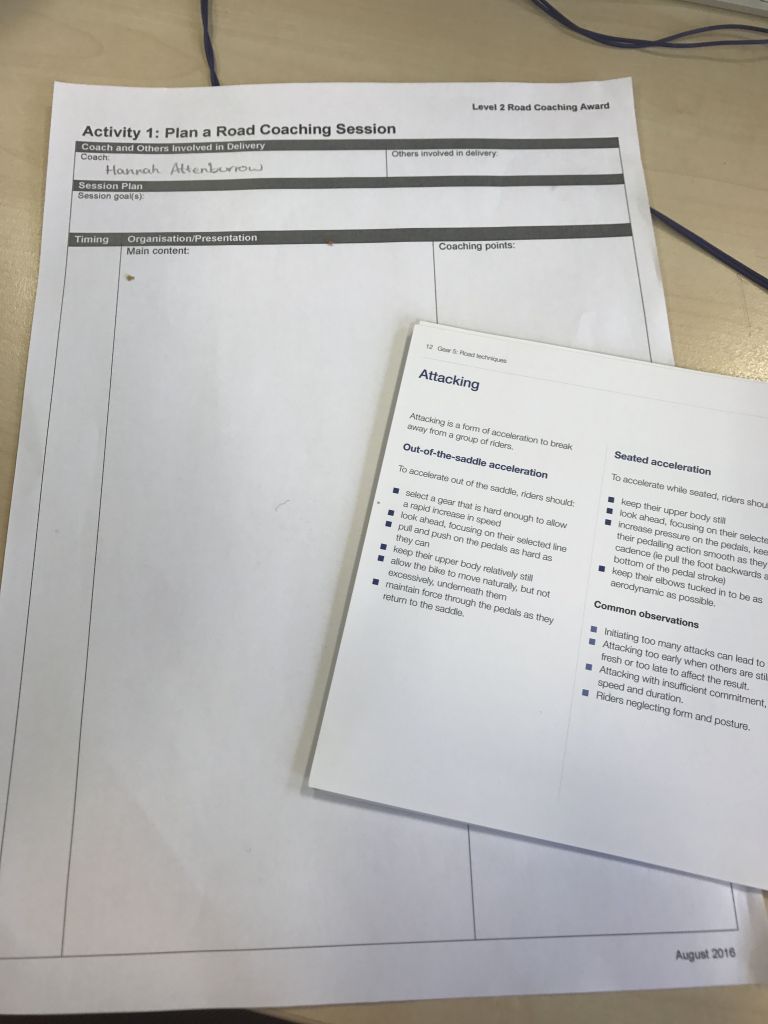
by hattenburrow | Apr 25, 2017 | Coaching, Training
Last weekend I travelled to Cyclopark in Kent to take part in my Level Two Road Cycling Course with British Cycling.
The two day course started with a development day and then assessment on the Sunday. Before the course start date we had an online learning platform where I completed a online assessment on road cycling (86% yay!) and also has to plan for a 10 minute coaching session on development day. This was also an opportunity to meet the other participants which was very helpful.
I chose countering an attack as my technique and worked on a 10 minute session which included seated and standing attacks as well as countering attacks from a bunch.

On development day we each had a chance to learn as a participant in sessions and to coach our own session. When it came to my turn I decided to leave out my first activity worried that I had packed in too much content. I started my session with an introduction which in hindsight was probably too long and then set my riders off. Sadly my session over ran as I tried to pack in far too much content. My session needed a clearer goal and refining for assessment day but I understood where I could improve it to make a more active.
The rest of the morning was spent being a participant in other people’s sessions this was really valuable as being a rider in a coaching session you can learn different ways of being coached and also look at coaching from a rider’s perspective which helps me to improve my own sessions. It was very wet and cold but the learning experience was so valuable.
In the afternoon we went through how to really drill down and create specific goals that related to types of road races and the components of fitness. This really helped me think about my own sessions and how I can create better coaching sessions with specific goals to be reached by riders by the ends of sessions.
My brain active and full of ideas I went back to my hotel Saturday ready to adapt my session plan ready for the 15 minute assessment on Sunday.
Sunday arrived and luckily the rain didn’t! My assessment went well instead of my goal being around countering an attack I looked more specifically at how riders can gain free speed. I focused on keeping my riders doing the same type of activity with subtle changes and adding in coaching points and checking for understanding as I went along.
My session went very well and I got good feedback from Richard and also lots of ideas on how I could adapt and progress my session further.
In the afternoon we did coach led racing which is different from ‘normal’ coaching sessions as you set up scenarios which could happen in a race, let it play out and then come in and discuss tactics and get feedback from the riders on what they did and how they would improve their performance. This was a really interesting way of coaching and I think with older kids and adults could work very well for coaching road and mountain bike sessions as it puts learning into practise in a more realistic setting.
I am really glad that I passed my Level two Road qualification it was a good weekend and I learnt so much and have loads of ideas for road racing sessions, now all I have to do is put some times in the diary to run some.
If you are interested in road racing coaching sessions in Hampshire and West Sussex please contact me.



